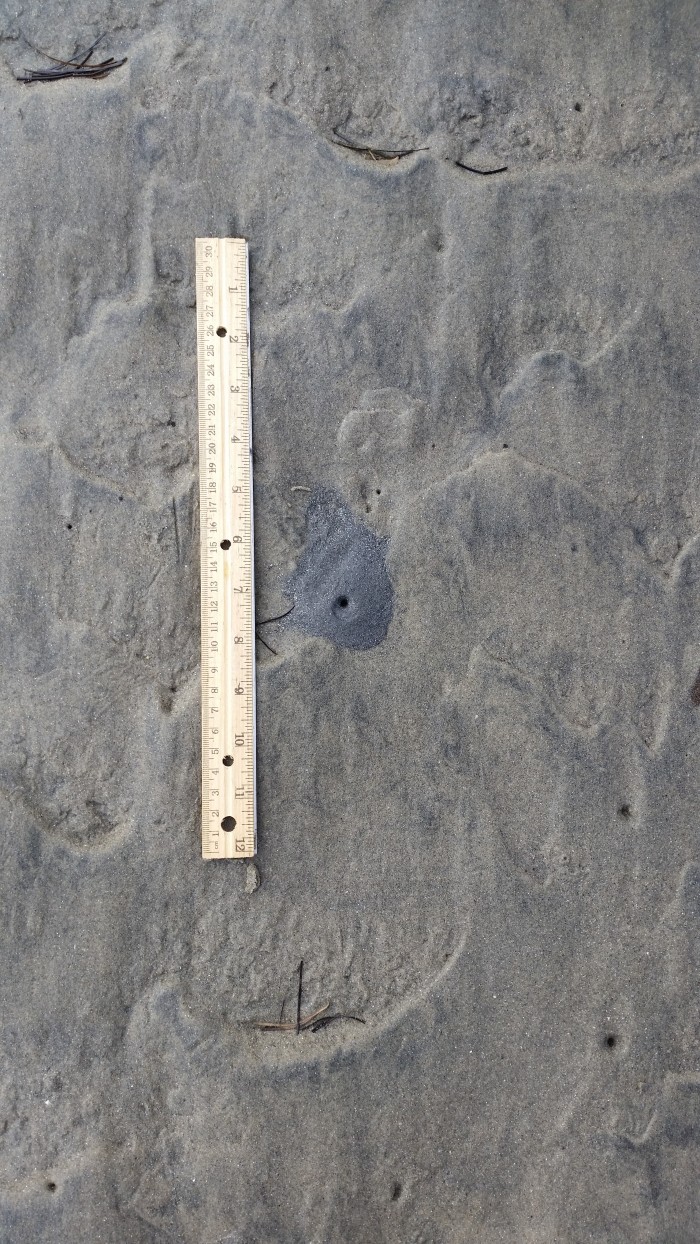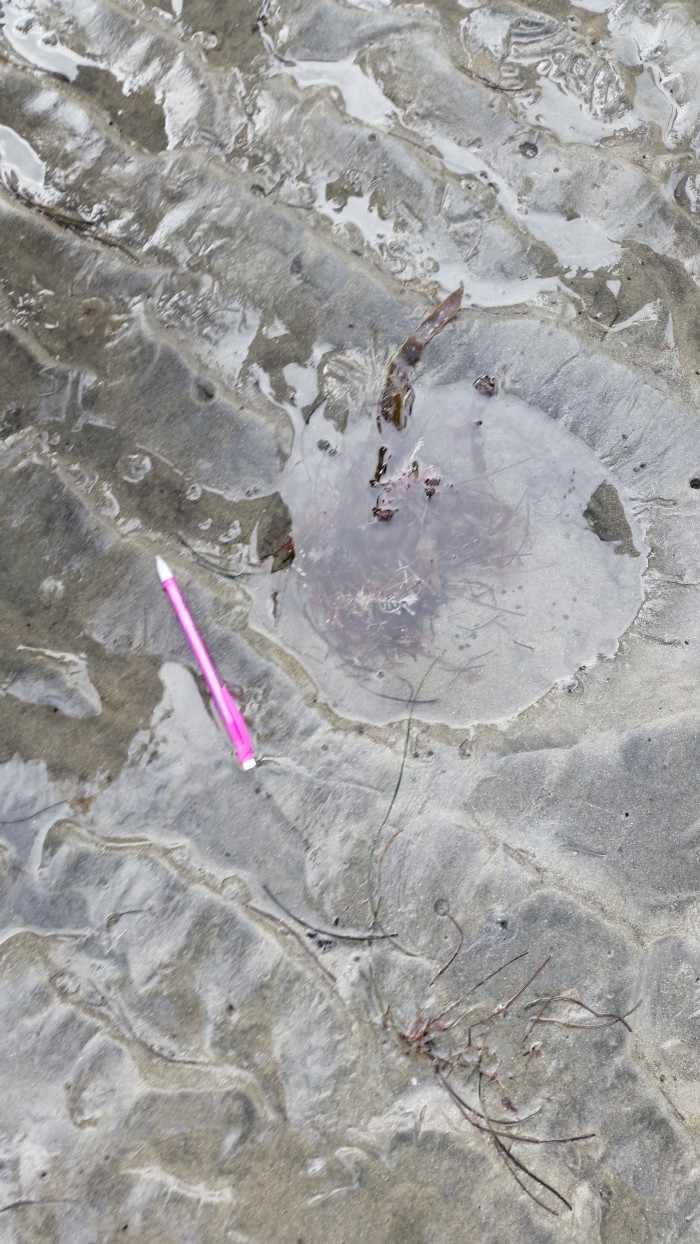Contrary to popular belief, geologists do more than just stare at rocks. Many geologists and paleontologists study fossils to gain a better understanding of an area. Trace fossils, which are the traces of an organic organism, are especially useful. Examples of trace fossils include footprints, impressions, burrows, and fecal matter. All of these can become fossilized in the right conditions, preserving them for future geologists to find. If you are interested in seeing examples of these trace fossils in person, the Ocean Beach tidal flats are the perfect place to go. Taking a walk through these tidal flats during low tide will reveal all manner of trace fossils. For example, look at the chunk of sandstone in the picture above. This is an excellent example of a trace fossil that has already become fossilized. The holes in this sandstone were formed by a clam or snail that bored a hole, and have been preserved in the rock. It is a common find in a tidal flat, and doesn’t tell us much. However, if this was found in a desert or at the top of a mountain, it would reveal that the area was once underwater.

In the picture above is an example of a hole left by a burrowing clam that has not been fossilized yet. This is how the trace fossil from the first picture would have looked before it was fossilized. So how does this hole become fossilized? There are several ways that it could be preserved, but the most common would be if the tide stopped coming in, causing the sand to quickly dry out. This would form a sandstone with a hole in it, similar to the one in the first picture.

It is not just clams and snails leaving trace fossils however, much larger animals can leave them too. In this picture is a ray pit, left behind by a stingray that swam in during high tide. While these animals rest on the bottom, they move their fins kicking up the sand. This sand is washed away by the tide, leaving behind this hole, which is another excellent example of a trace fossil. Remember that a trace fossil does not include any part of the animal, they are just tracks or holes left behind by their presence. (Although if you look carefully in the first picture, you can see a snail that took refuge in one of the holes!)